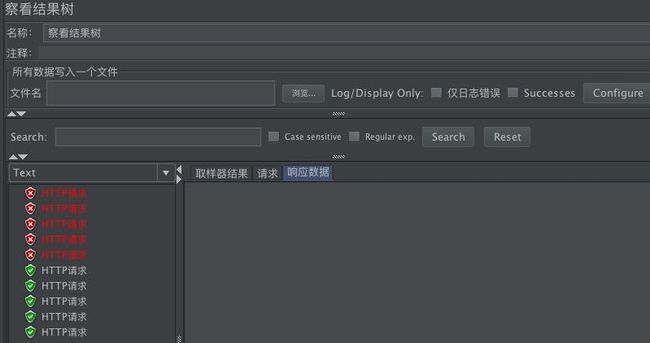Spring Cloud Gateway 扩展支持动态限流
之前分享过 一篇 《Spring Cloud Gateway 原生的接口限流该怎么玩》, 核心是依赖Spring Cloud Gateway 默认提供的限流过滤器来实现
原生RequestRateLimiter 的不足
- 配置方式
spring:
cloud:
gateway:
routes:
- id: requestratelimiter_route
uri: lb://pigx-upms
order: 10000
predicates:
- Path=/admin/**
filters:
- name: RequestRateLimiter
args:
redis-rate-limiter.replenishRate: 1
redis-rate-limiter.burstCapacity: 3
key-resolver: "#{@remoteAddrKeyResolver}" #SPEL表达式去的对应的bean
- StripPrefix=1- RequestRateLimiterGatewayFilterFactory
public GatewayFilter apply(Config config) {
KeyResolver resolver = getOrDefault(config.keyResolver, defaultKeyResolver);
RateLimiter- 在实际生产过程中,必定不能满足我们的需求
生产中路由信息是保存数据库持久化或者配置中心,`RequestRateLimiterGatewayFilterFactory` 并不能随着持久化数据的改变而动态改变限流参数,不能做到实时根据流量来改变流量阈值Sentinel Spring Cloud Gateway 流控支持
Sentinel 是什么?
随着微服务的流行,服务和服务之间的稳定性变得越来越重要。Sentinel 以流量为切入点,从流量控制、熔断降级、系统负载保护等多个维度保护服务的稳定性,分布式系统的流量防卫兵。
从 1.6.0 版本开始,Sentinel 提供了 Spring Cloud Gateway 的适配模块,可以提供两种资源维度的限流:route 维度:即在 Spring 配置文件中配置的路由条目,资源名为对应的 routeId自定义 API 维度:用户可以利用 Sentinel 提供的 API 来自定义一些 API 分组
pom 依赖
com.alibaba.cloud
spring-cloud-alibaba-sentinel-gateway
com.alibaba.csp
sentinel-datasource-nacos
配置本地路由规则及其sentinel数据源
spring:
application:
name: sentinel-spring-cloud-gateway
cloud:
gateway:
enabled: true
discovery:
locator:
lower-case-service-id: true
routes:
- id: pigx_route
uri: https://api.readhub.cn
predicates:
- Path=/topic/**
sentinel:
datasource.ds1.nacos:
server-addr: 127.0.0.1:8848
data-id: gw-flow
group-id: DEFAULT_GROUP
ruleType: gw-api-group
filter:
enabled: true配置nacos数据源中的限流策略
- 常用限流策略 常量
以客户端IP作为限流因子
public static final int PARAM_PARSE_STRATEGY_CLIENT_IP = 0;
以客户端HOST作为限流因子
public static final int PARAM_PARSE_STRATEGY_HOST = 1;
以客户端HEADER参数作为限流因子
public static final int PARAM_PARSE_STRATEGY_HEADER = 2;
以客户端请求参数作为限流因子
public static final int PARAM_PARSE_STRATEGY_URL_PARAM = 3;
以客户端请求Cookie作为限流因子
public static final int PARAM_PARSE_STRATEGY_COOKIE = 4;- 核心源码解析 SentinelGatewayFilter
sentinel通过扩展Gateway的过滤器,通过选择的不同GatewayParamParser 过处理请求限流因子和数据源中的配置进行比较源码如下:
public Mono filter(ServerWebExchange exchange, GatewayFilterChain chain) {
Route route = exchange.getAttribute(ServerWebExchangeUtils.GATEWAY_ROUTE_ATTR);
Mono asyncResult = chain.filter(exchange);
if (route != null) {
String routeId = route.getId();
Object[] params = paramParser.parseParameterFor(routeId, exchange,
r -> r.getResourceMode() == SentinelGatewayConstants.RESOURCE_MODE_ROUTE_ID);
String origin = Optional.ofNullable(GatewayCallbackManager.getRequestOriginParser())
.map(f -> f.apply(exchange))
.orElse("");
asyncResult = asyncResult.transform(
new SentinelReactorTransformer<>(new EntryConfig(routeId, EntryType.IN,
1, params, new ContextConfig(contextName(routeId), origin)))
);
}
Set matchingApis = pickMatchingApiDefinitions(exchange);
for (String apiName : matchingApis) {
Object[] params = paramParser.parseParameterFor(apiName, exchange,
r -> r.getResourceMode() == SentinelGatewayConstants.RESOURCE_MODE_CUSTOM_API_NAME);
asyncResult = asyncResult.transform(
new SentinelReactorTransformer<>(new EntryConfig(apiName, EntryType.IN, 1, params))
);
}
return asyncResult;
}
效果演示
动态修改限流参数
sentinel-datasource-nacos作为sentinel的数据源,可以从如上 nacos 管理台实时刷新限流参数及其阈值- 目前sentinel dashboard 1.6.2 暂未实现gateway 流控图形化控制 ,
1.7.0会增加此功能
总结
- 以上源码参考个人项目 基于Spring Cloud、OAuth2.0开发基于Vue前后分离的开发平台
- QQ: 2270033969 一起来聊聊你们是咋用 spring cloud 的吧。
欢迎关注我们获得更多的好玩JavaEE 实践




